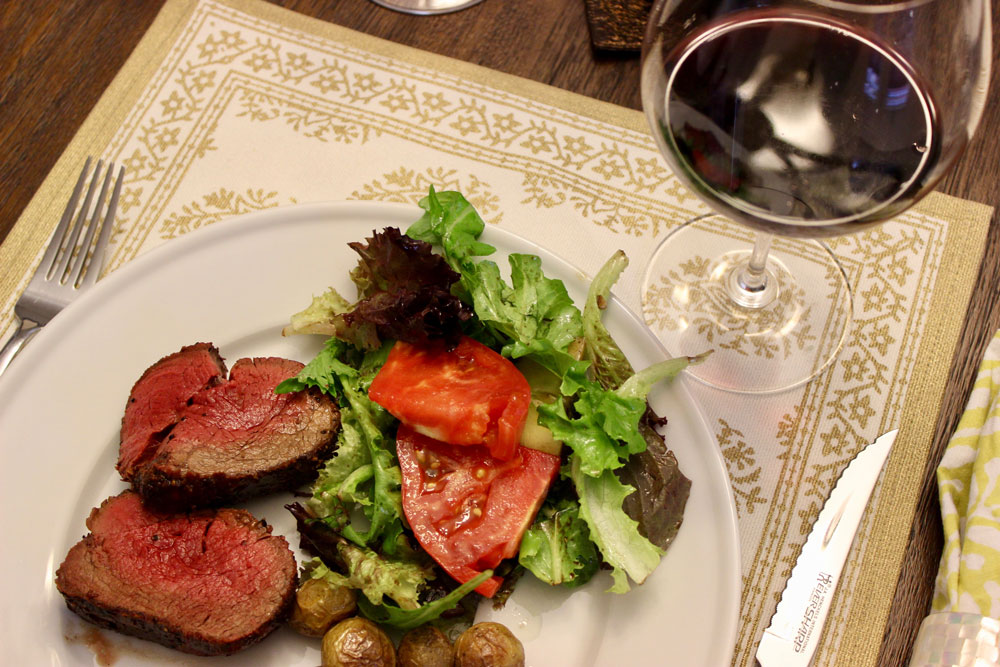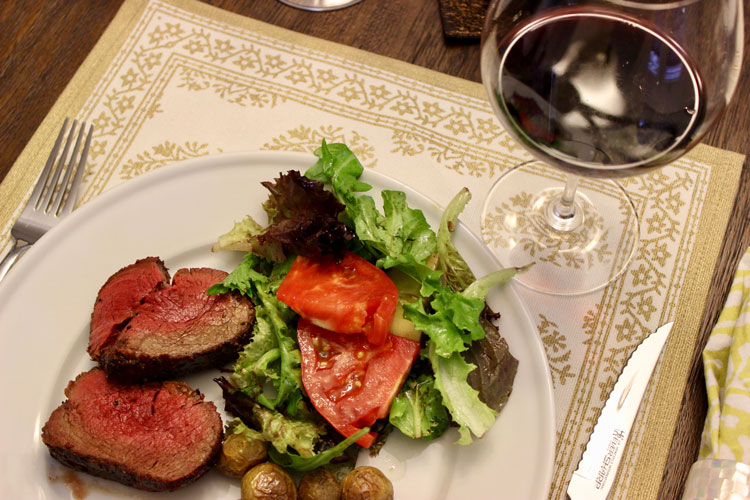The Virginia Grape, Pairing Food & Wine

In the 1970s, it was Julia Child who first introduced America to the idea of pairing food and wine. In those days, however, supermarket wine walls consisted primarily of jug wines which sat alongside Boones Farm, MD 20/20 and other similar wine-like products. Most wannabe wine drinkers lacked sophistication, but more importantly, they had little access to quality wine.
In the 40-plus years since Child brought the concept of food and wine into our living rooms, the American palate has matured along with access to fine wine in nearly every restaurant and grocery store. One might say that the choices offered in such establishments can be overwhelming with even the smallest shops or eateries offering tens or hundreds of wines.
Higher-end restaurants likely employ a sommelier or a similarly educated wine steward to make recommendations. In less upscale establishments or when cooking at home, you might not always have access to an expert. It is a fortunate aspect of the digital age that we can now gain insights online. Resources range from a quick-reference pairing chart on winefolly.com to much more comprehensive pairing advice on matchingfoodandwine.com.
Two Simple Rules
Rule 1: If you like the pairing, that’s all that matters. Authoritative wine snobs may beg to differ, but the only real consideration is your personal preference.
Rule 2: Refer to Rule 1…
Keeping the simple two-rule system in mind, make an effort to engage in some experimentation. There are many wines and even more pairing options. Try to explore them and avoid getting hung up on a single wine until you have “dated around” just a bit. Sometimes we just don’t know what we don’t know, and broad experience can help close that gap. In addition, the more wine we taste, the more our tastes tend to evolve. Just try to keep an open mind.
Conventional Wisdom
Conventional wisdom has long dictated that red wine pairs well with red meat, and white wines are best served with fish and poultry. We can roll with that as a basic rule of thumb, but as is often the case with sweeping generalizations, it doesn’t hold up in every situation.
What happens when you are dining out and your friends have ordered entrees that include beef, fish and veggie options? Well, you can always order by the glass (which is seldom the most economical route) or consider a compromise. In such situations, I typically look for a lighter-bodied red like a Pinot Noir from any geographic region or a Cabernet Franc from Virginia or France’s Loire Valley. This may not work perfectly for everything, and it may make some experts cringe, but it gets us close enough.
Furthermore, the red wine/white wine rule applies exclusively to meat dishes. Lighter, non-meat entrees can work well with lighter-bodied reds, a white wine or a dry-style rosé.
A Few Basic Guidelines
Even wine drinkers who claim to dislike red wine will find that their anti-red stance will soften when food is added to the equation. The thing that people find most disconcerting about reds is the tannin in the “finish” (on the back of the tongue) that seems to suck all the moisture out of your mouth. This is typically an aspect of very young wines. A little age can soften the tannic structure and make these wines more approachable.
I typically like a red that is at least four years old, but lighter-bodied reds do not necessarily require this much age. You might also find that opening a younger wine in advance of the meal and letting it sit (breath) for a while will help the wine to “open up” and reduce those mouth-drying tannins.
A bit of acidity in a white wine is what lends it to pairing, but overly acidic wines can trigger a strong pucker response and be extremely off putting. At the same time, whites that are too sweet or fruity can be what we call “flabby” and don’t pair well either. Try a wine that contains fruit (and maybe just a little sweetness) and has some acidity. You will taste the sweetness on the tip of your tongue, fruit toward the middle and acidity at the back. White wines that contain both fruit and acidity are considered “balanced” and work very well with food.
Generally speaking, sweet wines don’t pair well. Having said that, a certain amount of sweetness is desirable and holds up well when paired with something spicy. So you might consider a sweeter wine with many Asian cuisines or even Mexican food.
Recommended Pairings With Local Wines
I reached out to a few local winemakers and asked them to suggest a pairing with one of their favorite wines. Here is what they said: Arterra Wines chardonnay with grilled salmon seasoned with fresh thyme on top of a bed of fresh romaine and arugula fermented zucchini, chopped red pepper shredded carrots, olive oil, and chives — Jason Murray and Sandy Gray-Murray of Arterra Wines in Delaplane feel that “the roundness of our native yeast chardonnay helps bring out the subtlety of flavor combinations in this dish.” They went on to explain that the “chardonnay emphasizes fruit rather than barrel, so this delicate dish is not overpowered by this wine.”
Casanel Estate carménère with Mediterranean-spiced grilled rack of lamb — Katie DeSouza of Casanel Vineyards near Leesburg likes their carménère with grilled rack of lamb because of the “acidity along with the bright, red fruits like raspberry and black cherry, finishing with traces of smoky toast and spice.” This, she believes, works well with the “highly spiced and seasoned [lamb].”
Zephaniah Farm Vineyard chambourcin with chocolate pudding — While many experts insist that chocolate does not pair well with wine, it goes remarkably well with fruity reds. Bonnie Hatch from Zephaniah Farm Vineyard near Leesburg suggested a fairly unconventional pairing of their estate chambourcin and chocolate pudding. Hatch pointed out “chocolate is not something people think about pairing with chambourcin.” In spite of that, she went on say, “They frequently serve it at family meetings and after dinner.” Hatch makes her chocolate pudding with 59 percent chocolate and tops it with homemade whipped cream and strips of crystalized ginger.
These are just three of a limitless number of pairing options with local wines. Whether the wine is from Virginia or elsewhere in the world, don’t be afraid to experiment and discover your own favorite pairings. ML
Brian Yost blogs as The Virginia Grape and writes for a number of local, regional and national publications. His articles concentrate on wine trends and wineries in the Eastern United States. Find more of his writing at thevirginiagrape.com.



